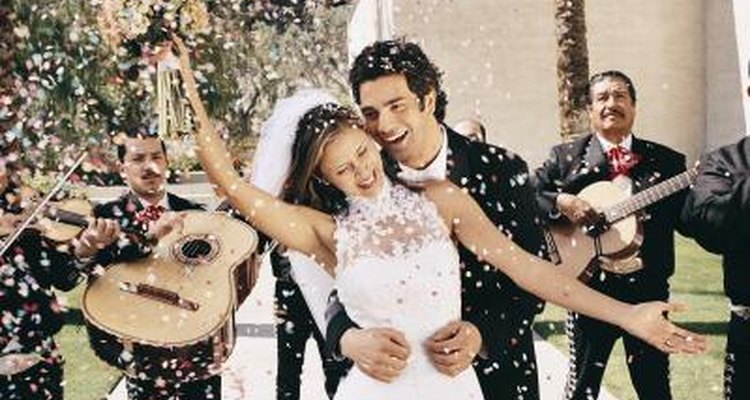
Our concept of marriage today is different from what it was a hundred years ago. The rise of feminism and the sexual revolution of the 1960s redefined gender roles in marriage. Women entering the work force in significant numbers changed the economic realities of marriage. The definition of marriage was re-examined when divorce became socially acceptable and gay rights were established. As women claimed decision-making rights in their marriages and men took on some of the responsibilities of child-rearing, modern marriages became more egalitarian.
The Economics of Marriage
Traditionally women were financially dependent on their husbands, who were the sole wage-earners in the family. All financial assets were owned exclusively by the male who doled out housekeeping money as he saw fit. If lower-income families needed the additional income from a working wife, her salary was handed over to the husband. Women married for financial security and to have a provider for their children. In modern marriages most women no longer marry for economic reasons; they are better educated, pursue well-paying careers and are financially independent.
Gender Roles
In traditional marriages the division of responsibilities was clearly designated by gender. The husband worked outside the home and was responsible for the family financially while his wife was solely responsible for taking care of the home: shopping, cooking, cleaning and raising the children. In modern marriages the husband and wife share responsibilities. Some wives might even earn a larger income than their spouses. Most modern husbands participate in the care of the children, including changing diapers as well as possibly taking a paternity care leave from work to stay home full time with the kids.
Freedom of Choice
Traditional marriages locked the spouses into their predefined roles without any opportunity to allow for individual choice. Married women were expected to fulfill their role as homemaker and had to stifle any career ambitions or frustrations they might have had. Modern marriages allow for individual preferences. The spouses are considered equal partners and the women have their share of power and control in decision-making for the family.
Role of Sex
Traditional marriages provided a safe and socially acceptable sexual outlet. When premarital sex was taboo, couples were expected to wait for their wedding night to become physically intimate and to remain monogamous throughout the marriage, explains Richard Reeve, policy director of the Center on Children and Families at the Brookings Institution in his article "How to Save Marriage in America." As more couples today live together without the formality of nuptials, modern marriage is no longer needed as an institution for permitted sex. Couples might choose to live together informally or tend to marry later in life.
Related Articles

Traditional Gender Roles in Marriage

Husband & Wife Relationships in the ...

Traditional Roles of Men & Women in ...

Why Do Married Men Have Affairs?

The Effects of Divorce on Women

What is the Typical American Family?

What Is the Proper Way to Get Married ...

Power Imbalance in Marriage

Marriage in Mexican Culture

Is It Common to Fight With a Husband ...

The Emotional Effects on the Father ...

Importance of Family Structure in ...

Problems With Teen Marriage

The Advantages & Disadvantages of the ...

How to Nicely Tell My Husband to Get a ...

The Negative Effects of a Divorce

The Pros & Cons of Gender Roles

Reasons Women Delay Marriage

Groom's family wedding etiquette

Reasons Why Women Get Married
References
- American Association of Couples and Sex Therapists: Traditional Versus Contemporary Marriage
- Love and Fidelity Network: The Rational Superiority of Traditional Marriage
- The Age: Traditional Marriage Model Needs to Submit to Modern World
- The Atlantic: How to Save Marriage in America
- The Chronicle: Why Would I Want a Traditional Marriage?
- Psychology Today: Ask An Anthropologist About Marriage
Resources
Writer Bio
Freddie Silver started writing newsletters for the Toronto District School Board in 1997. Her areas of expertise include staff management and professional development. She holds a master's degree in psychology from the University of Toronto and is currently pursuing her PhD at the Ontario Institute for Studies in Education, focusing on emotions and professional relationships.
Photo Credits
Digital Vision./Photodisc/Getty Images